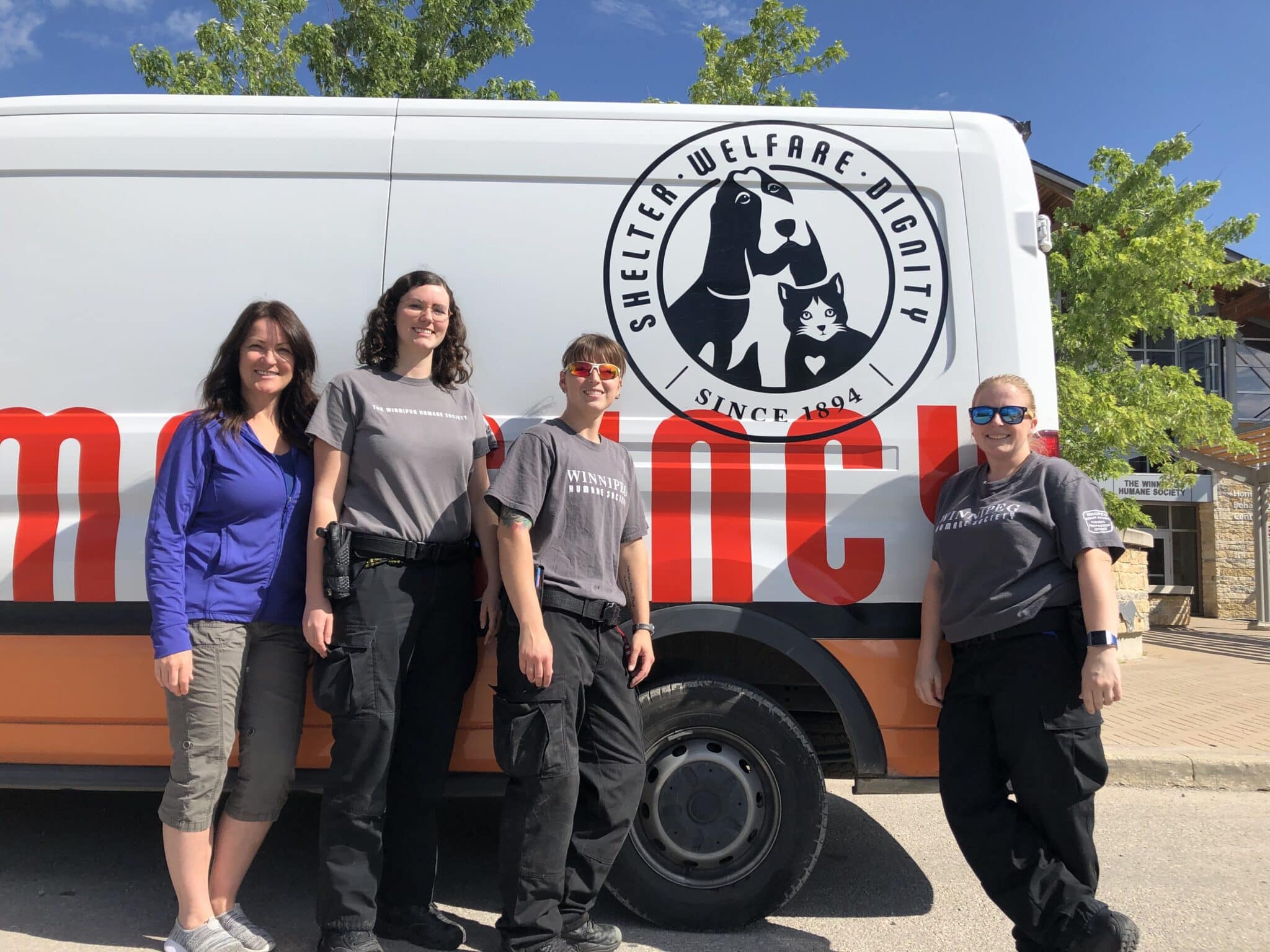
CEO Blog: Undercover Boss (not really) Series - Episode 2: Investigations and Emergency Response

The second stop in my quest to do as many behind-the-scenes jobs as possible was the Investigations and Emergency Response Team, known here as IER. This group is responsible for enforcing the Animal Care Act through Animal Protection Officers with the invaluable assistance of our Humane Officers. IER also responds to crisis when a pet is in harm’s way; a house fire, stuck somewhere unsafe, found on the road injured, or at a home but very ill.
On the day I joined the group to learn about their jobs I rode the Emergency vehicle with Ashley and Sara, with backup support from our dispatcher Kim. Leigh, an Animal Protection Officer was also there doing follow-ups and of course we had the Director responsible for the area Heather and the Manager of IER Lorrie. This group, together with a few other officers, handle over 1,300 investigations every year and respond to hundreds of calls every month, from 8am to 11pm, no matter if it is a weekday, a weekend, or a holiday.
At the start of the day, the team reviews the open/ongoing jobs that require either inspection or re-inspection. One little known fact is that when there is a valid animal welfare concern, the Animal Protection Officer’s first task is to try to work with the human caregiver through a “correction order”, unless the situation is too serious or dangerous to leave the pet where it is. But once such order is issued, well, that means going back to that address to ensure compliance. How many times? It depends, but it can be anywhere between 3 and 10 visits to make 100% sure the pet is taken care of.
Upon my arrival to the IER office, the team was busy going over three animals which were seized late the night before, after receiving a report from a neighbour. The cat was diagnosed that morning with stomatitis, which is a very bad inflammation of the gums and the lips, and the poor cat needed all (yes, all) the teeth removed. The dogs had their nails so long that were curling (imagine a corkscrew) and one of them was severely overweight, so much so that it was very hard to find a way to draw blood. The IER team works closely with our clinic staff to make sure everything is documented in case the situation requires to press charges or to present information to a judge or prosecutor.
And that was just the beginning…
My first ride in the IER truck was to pick up two injured animals, both cats. One had a broken leg (we were told), likely due to being hit by a vehicle. The other was a feral cat which was trapped and was bleeding. Feral cats are basically wild animals, so being in a cage is truly torture for these cats. They are not used to humans, and the best way to handle them is by covering the trap/carrier with a towel so they are a little less afraid.
The injured cat was a gentleman and a scholar, and everyone in the vehicle was taken by his awesome personality and kept telling him “you are going to be okay, you are safe now”. The feral cat was so terrified and injured that we knew there was not a lot that could be done, other than provide dignity, compassion and let our veterinarians decide what was the most humane way to stop the pain.
While driving I quizzed the team about their jobs. How can they do this day-in and day-out? The answer: because we have an amazing group and we all work together. And of course, because all the IER staff have a heart of gold and truly want to help pets which otherwise will not survive. So, if you ever see our truck, feel free to say ‘thank you’ because the work the team does is tough, necessary, and done in the most professional way possible. I was humbled to be riding with such amazing people.
Once the cats were safely transferred to our clinic and all the paperwork entered in the system, we had to quickly respond to our second call: a very sick kitten.
According to the caller the kitten had bloody diarrhea, was lethargic and the lips were turning white. We drove to an apartment complex, where we met one of the human caregivers for the kitten, not the person technically responsible for the pet but a close relative. Our team explained that our clinic does not treat animals privately, the only option is to surrender the pet to the Winnipeg Humane Society. We do not return the pets, it is a one-way street. The person signed the documents and off we went to try to save this kitten.
Bringing a sick animal to a shelter is not as simple as driving and dropping the animal off in our clinic. With hundreds of animals all being housed together, every precaution must be taken to avoid contagion, especially of very serious illnesses. So as soon as we arrived we took the carrier with the kitten to a separate room, we placed a big sign saying STOP DO NOT ENTER and we took a swab of the kitten’ bum (due to its diarrhea) and put it in a little device called a “snap test” to rule out a fatal or highly contagious disease.
The test came back negative, so the Registered Veterinary Technician took the kitten to do a full physical and figure out what was wrong.
As soon as all the information was entered in our system, there was another job waiting for the team, this time picking up kittens that seem to be running around without a cat mom in sight. Unfortunately, I was called to review the Humane Society draft audited financials, so I could not go on a kitten hunt.
I chatted a little bit with our dispatcher and I listened to a few messages of people that were either threatening or insulting our staff because we have removed animals from them due to humane concerns. Being in IER is a very difficult job indeed.
The good news for the team is that we have found funds to convert what today is a storage space into a proper IER office where we can better follow-up with correction orders and organize the daily work better. And we are also adding push-to-talk devices so anyone outside the shelter can call for help quickly without having to use the cellphone. And GPS tracking so if there is a SOS call, we know exactly where to direct police. Unfortunately, violence is on the rise and protecting our staff is a priority.
Thank you for reading, feel free to ask me any questions and continue to follow my journey as I try to get rid of my “Ivory Tower Syndrome”. If you’d like to check out past episodes, you can read them here and here.
In service,
Javier Schwersensky
WHS CEO

